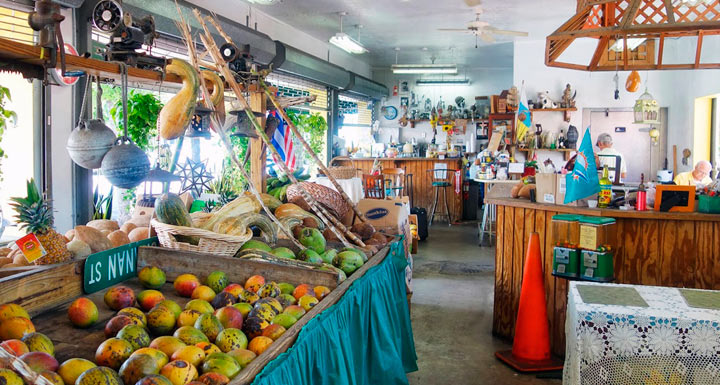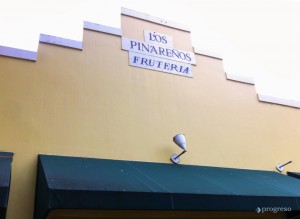
The ‘pinareños’ in the heart of SW Miami
According to the U.S. Population Census, 1,213,438 Cubans live in Florida. Most of them reside in Miami-Dade County, where they constitute 34.3 percent of the population, not counting direct descendants. Many of them have replicated in Miami the spaces, streets, smells and flavors of the island. Progreso Semanal will show some examples.
MIAMI — I was born stealing mangoes. As soon as spring began, I’d go with my neighborhood buddies to the juice-processing plants in Havana. We’d leap over the barbed-wire fence and fill baskets with huge mangoes, whose smell gave us away on the trip back home.
I remembered those years as I walked recently through Southwest Miami (the sagües or sagüecera, makes no different how we say it, because we Cubans know what we’re talking about) and inhaled the smell of ripe mangoes.
Forty-five years ago, Ángel and Guillermina, two natives of Bahía Honda in Pinar del Río province, bought the corner of SW 8th Street and SW 13th Avenue — the heart of Miami’s Southwest — and built, by dint of hard work, what is today the most famous fruit and produce market in the county. They called it “Los Pinareños.” There, you can walk past boxes filled with coconuts, mameys, marañones (cashew fruits), mangoes, bananas, plantains, mameys, squash and memories, lots of memories.
Ángel and Guillermina fought against Batista and — disenchanted, like many others who believed in a third path for Cuba, other than socialism — emigrated to the United States in the early 1960s. Here, their children were born. The oldest, Pedro, who has never been in Cuba, tells me proudly, “I’m from Pinar del Río, from Bahía Honda, and the fruits we sell are as Cuban as I am.”
Pedro becomes sentimental when he talks of a land that he has never seen but knows better than many. “We sell Cuban fruit,” he says. “Through friends and relatives, we receive the seeds that we plant. Those mangoes you see there are Cuban, and that mamey tree came 40 years ago from the La Toya Farm…” Here he pauses and says, in English, “Please stop, I’m getting emotional.”
In that place, everything reminds us of Cuba, from the cement floor to the patio, where veterans of Brigade 2506 come daily to chat and recall how there was a time when they controlled everything that moved in that sector of Miami.
Pedro confesses: “We have brought even sand from Bahía Honda and guayabita, from which the drink is made. It’s not well known here, but it was brought to us from Cuba and I’m trying to figure out what to do with it.” While Pedro speaks, Ángel splits a coconut, hands it to me and sits down to listen to his son. “We’re making a very big effort, because in Cuba there’s earth everywhere,” says Pedro. “You toss away a seed and it grows into a fruit tree. This town is built on gravel. Planting is very difficult. Even so, when my father planted mameys, they grew.”
“Everything you see, the oil lamps, the posters, the clay jars, they’re all souvenirs from Pinar. We never stopped being farmers. In my blood there are almost 200 years of experience. That’s why, with my eyes closed, I can tell you which fruit is good and which has to be thrown away.”
The corner is more than a fruit market. The New Times said that the best smoothies in town were served there, one of the best coffees and the best conversation. At Los Pinareños you breathe in nostalgia and, above all, Cubanness. Today, we’re missing Guillermina’s tamales; she is indisposed and her absence is noticed throughout the building.
Pedro pours himself a cup of coffee and says, “Not a week goes by without someone trying to buy this place. Every time that happens, I look at him and ask ‘Do you have sons, siblings, grandchildren?’ And when he answers yes, I say, ‘If I sell this, where are your children going to buy mangoes?'”
As I walk down the aisles, I go past a crate of very ripe mangoes and I tell my hosts that, as I child, I stole mangoes in Havana. Pedro smiles and nods. As soon as Ángel looks away, I grab a mango and slip it into my backpack. Pedro laughs and shakes my hand.









